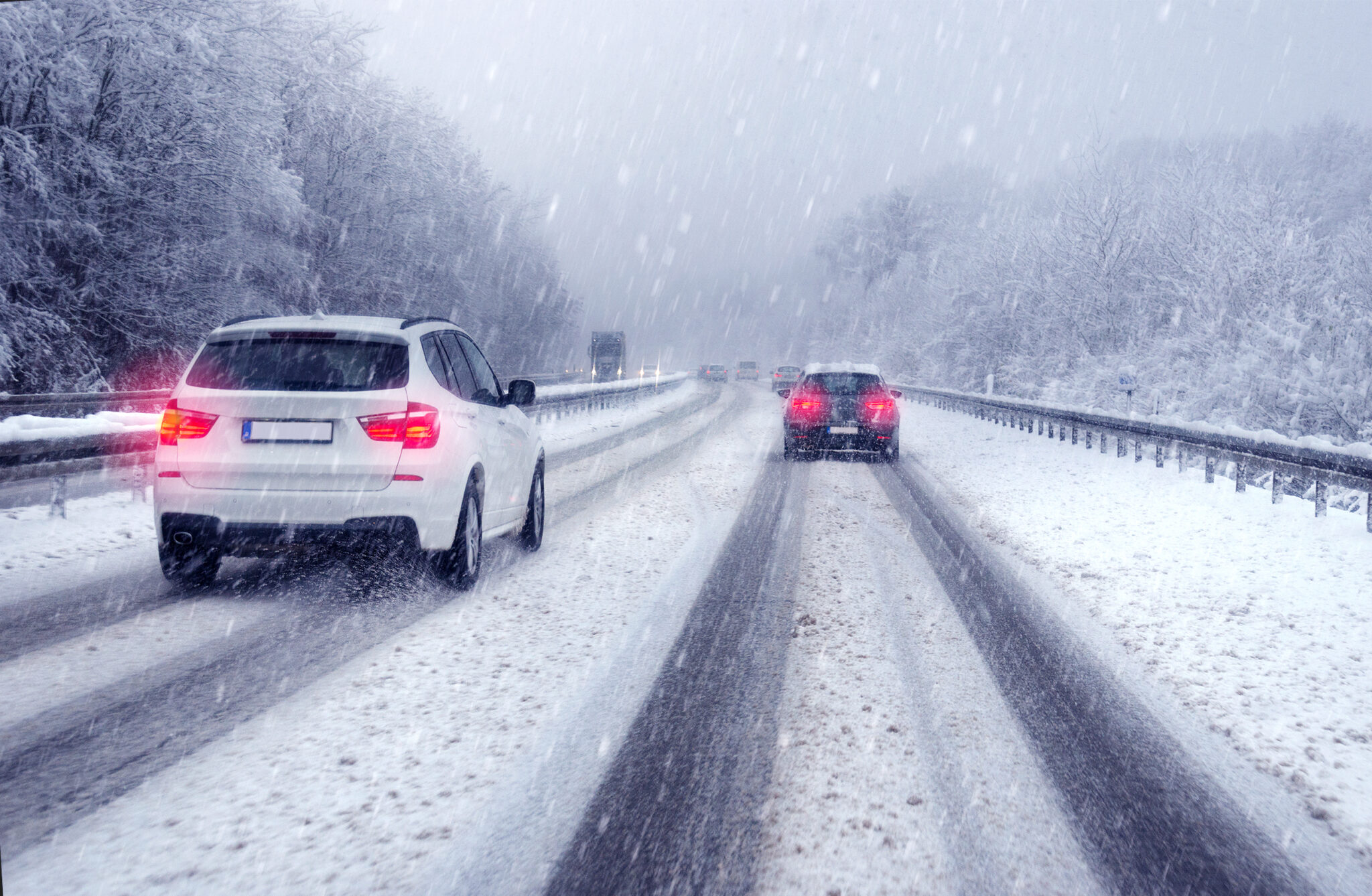Winter weather can cause extremely dangerous road conditions including snow, sleet or ice. Use the following tips to prepare yourself and your vehicle for winter weather driving.
Speed and Distance – Drive slower on snow and ice because it’s harder to control or stop your vehicle. Also, increase your following distance to allow enough distance to stop should your vehicle slide.
Tires – Tire inflation pressure decreases with outside temperature. Ensure each tire is filled to the recommended inflation pressure for your vehicle. Inspect the tread and sidewalls for any damage and inspect your spare tire.
Batteries – In cold weather, gasoline and diesel engines take more battery power to start. Have a mechanic check your battery, charging system, belts, and other systems.
Car Seats – Dress your child in thin, warm layers, and place blankets or coats around your child after securing the harness. Heavy winter coats can interfere with the proper harness fit on a child in a car seat.
Lights – Check your headlights, brake lights, turn signals, emergency flashers and interior lights.
Windshield Wipers – Make sure your vehicle’s windshield wiper fluid reservoir is full of “winter” fluid with deicer. Make sure defrosters and windshield wipers work and replace worn blades.
Cooling System – Make sure your vehicle is full of coolant that meets the manufacturer’s specifications. Check the cooling system for leaks, test the coolant, and replace old coolant.
Gas Up – Keep your gas tank close to full whenever possible.
Vehicle Supplies – Carry supplies in your vehicle that you might need in an emergency:
- a snow shovel, broom, and ice scraper
- abrasive material (sand or kitty litter), in case your vehicle gets stuck in the snow
- jumper cables, flashlight, and warning flares and emergency markers
- blankets for protection from the cold
- a cell phone and charger, water, food, and necessary medicine
Plan Your Route – Before heading out, make sure to check the weather, road conditions and traffic. Let others know your route and anticipated arrival time.
In an Emergency – If you are stopped or stalled in wintry weather, stay focused on yourself and your passengers, your car, and your surroundings.
- Stay with your car and don’t overexert yourself.
- Put bright markers on windows and keep the interior dome light on.
Read the full article “Winter Weather Driving Tips” published on the United States Department of Transportation National Highway Traffic Safety Administration website.


